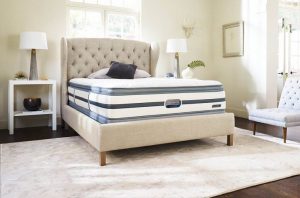Ultimate Guide to Choosing the Best Mattress for You, a guest post.
Studies have shown a strong correlation between sleep quality and overall productivity. Several factors, including using the wrong mattress, can cause low sleep quality. Hence, choosing the best mattress can prove a life-changing factor for anyone. Suffice it to say that there is no one-size-fits-all in the mattress industry; however, there are key factors one should pay attention to when choosing a mattress.
Key Factors to Guide Your Decision
- Reviews
- Size
- Budget
- Type of Mattress
- Body Type and Position
Reviews
Take advantage of online reviews of mattress products. Reviews from customers who have tested and used the product can offer valuable insight into certain characteristics which include: expected durability of the product; how well the product is made; Quality of materials; Bounce; Edge Support; Motion Isolation and Heat transfer. You get a feel of how you will experience the product before you get it. There are also great sites that offer reviews on mattress products. A simple Google search will provide a couple.
Size
Size matters when it comes to choosing the right mattress for you. Are you sleeping alone or with a partner? Do you have kids sleeping with you or will they have a separate bed space? There is a wide range of mattress sizes suitable for different purposes. The common sizes include:
- TWIN (39 X 74 inches): This is ideal for a one-person – a child or average height adult.
- TWIN XL (39 x 80 inches): This great for tall adults who sleep alone.
- FULL (54 X 74 inches): Also known as a double mattress, it provides a wider space for single sleepers. It is also ideal for growing children as it provides space for them to grow.
- QUEEN (60 x 80 inches): This is a popular choice for sleep partners. It is also ideal for a guest bed.
- KING (76 X 80 inches): Ideal for sleeping partners sharing their space with kids or a pet. It is equivalent to two Twin XL.
- CALIFORNIA KING (72 x 84 inches): Provides more ample space and suitable for an adjustable bed.
Budget
Pricing and quality usually correlate with each other when it comes to choosing a mattress. Mattresses can cost for as low as $200 to as high as $3000. The higher one invests the higher quality one can expect from the product. Products with higher quality usually last longer and offer specific features like heat transfer or motion-sensing; however, they can be expensive. Low-quality mattresses are usually made with low-density polyurethane foam and do not long. If your budget is small you can invest in a less expensive mattress and plan to get a better one in the future.
Type of Mattress
Mattress types available in the market include Innerspring, Natural Fiber, Memory Foam, Latex, and Hybrids.
- Innerspring: This a widely popular type of mattress type. Benefits of this type include: they provide edge support; they produce less noise; they are breathable and they are easy to transport. However, they are limited to one-side use only. There different kinds of Innersprings including Pocketed coil, Continuous coil, Bonnell coil and Offset Coil.
- Natural Fiber: They are produced using limited chemicals and are extremely durable. Popular options for this type include Organic Cotton which can last up to 15 years; Organic Wool which is great temperature regulation; Hemp which is suitable for vegans; Coconut coir which provides a balanced quality; Latex and Bamboo both produced naturally.
- Memory Foam: This mattress type is viscoelastic and reacts to heat and pressure. It offers key advantageous benefits such as suitability for proper spine alignment, prevention and relief of pain, low motion transfer, reduced allergens and easy fitting with adjustable beds.
- Latex: When it comes to superior durability, Latex is the best option.
- Hybrids: This features different kinds of mattresses in one single unit.
Sleeping Position
We exhibit unique physical characteristics and therefore might have different preferences for the type of mattress to choose from. Examined below are sleeping positions used to ascertain mattress decisions:
- Stomach Sleepers: If you sleep on your stomach, a firm bed would be an ideal option as you would not want to sink too far in.
- Side Sleepers: Sleeping on the side causes more pressure on the hips and shoulders. The best mattress for side sleepers offers great support, offer sufficient support to prevent pelvic rotation and provide good contour. Generally, side sleepers should go for softer mattress types.
- Back Sleepers: Medium to medium-firm mattresses can be ideal for back sleepers. You should go for a mattress that provides contour support for the lumbar area. Memory foam and latex products provide a great combination of support and pressure relief.
Vikas Dhiman, author of this post is the owner of Visual Hull, a full-service digital marketing agency that is highly focused on small and medium businesses. He enjoys hiking, swimming, and photography.

